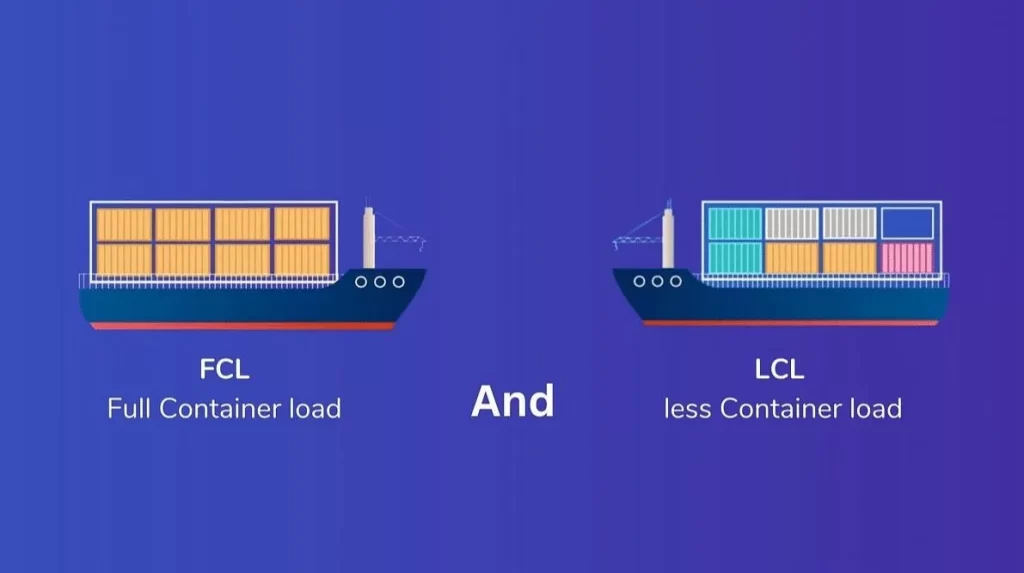- By TOP CHINA FREIGHT
- September 18, 2025
- Sea Freight, Shipping
Table of Contents
Many importers and businesses often ask: how long does ocean freight take from China to US? Understanding transit times, costs, customs procedures, and logistics strategies can significantly improve supply chain efficiency. This article provides comprehensive insights, tables, and actionable tips to ensure smooth shipping from China to the US.

What Factors Affect Ocean Freight Transit Time from China to US?
Several factors influence the shipping time from China to the US:
Departure Port and Destination Port
Major Chinese ports such as Shanghai, Shenzhen, and Ningbo serve different US ports like Los Angeles, New York, and Savannah. Distance and port congestion directly impact transit time.
Shipping Route
Direct vs transshipment routes affect the overall duration. Direct services are faster but often more expensive.
Seasonal Demand
Peak seasons like July–October for holiday imports can delay shipments.
Customs Clearance
Efficient documentation and customs procedures reduce delays.
Weather Conditions
Severe storms or rough seas can extend transit times by several days.
Typical Transit Times Table: China to US Ports
| From China | To US Port | Transit Time (Days) | Notes |
|---|---|---|---|
| Shanghai | Los Angeles | 15–20 | Direct route, popular for electronics |
| Shenzhen | New York | 25–30 | Longer route, may include transshipment |
| Ningbo | Savannah | 20–25 | Ideal for furniture and bulk cargo |
| Qingdao | Seattle | 18–22 | Balanced cost and speed |
How Much Does Ocean Freight from China to US Cost?

Shipping costs vary depending on container size, shipping method, and service level. Below is a reference:
| Container Type | Approx. Cost (USD) | Notes |
|---|---|---|
| 20ft Container | $1,500–$2,500 | Standard cargo |
| 40ft Container | $2,500–$4,000 | Larger shipments, more cost-efficient per unit |
| LCL (Less than Container Load) | $50–$150 per cbm | Suitable for small shipments, shared container |
Tips to Reduce Costs:
- Book in advance to avoid peak-season surcharges.
- Consolidate cargo to save on LCL shipments.
- Work with experienced freight forwarders to optimize shipping routes.
What Are the Pros and Cons of Ocean Freight?
Comparison Table: Sea vs Air vs Rail Freight
| Mode | Cost | Transit Time | Pros | Cons |
|---|---|---|---|---|
| Ocean Freight | Low–Medium | 15–30 days | Cost-effective for large shipments | Slow, affected by weather |
| Air Freight | High | 3–7 days | Fastest, reliable for urgent cargo | Expensive, weight-limited |
| Rail Freight | Medium | 15–20 days | Efficient for inland delivery | Limited to specific routes |
How to Choose the Right Shipping Method from China to US?
Air freight is ideal for time-sensitive goods, while ocean freight is best for bulk, non-urgent cargo.
For large-volume shipments, ocean freight offers significant savings per cubic meter.
Rail freight is effective if shipping to inland US cities connected by rail.
LCL allows for smaller shipments without paying for a full container.
What Documents Are Required for Ocean Freight Shipments?

Proper documentation ensures smooth customs clearance. Essential documents include:
| Document | Purpose |
|---|---|
| Bill of Lading (B/L) | Proof of shipment and title of goods |
| Commercial Invoice | Itemized cost for customs valuation |
| Packing List | Detailed contents of each package |
| Certificate of Origin | Confirms goods’ manufacturing country |
| Import License (if required) | Compliance with US regulations |
Tip:
Double-check the consignee details to prevent customs delays.
Can Transit Times Be Reduced Without Using Air Freight?
Yes, there are strategies to shorten ocean freight transit:
Direct Shipping Routes:
Avoid transshipment ports that add days to the journey.
Priority Booking:
Some carriers offer premium schedules for faster loading/unloading.
Optimized Port Selection:
Choose ports with lower congestion.
Supply Chain Coordination:
Align shipment schedules with production timelines to avoid storage delays.
Example Case:
A US electronics importer reduced transit time by 5 days by switching from Ningbo transshipment to Shanghai direct service.
How Does Seasonality Affect Ocean Freight Duration?
Peak periods such as the months before Christmas, Chinese New Year, and summer sales can significantly impact shipping:
Congestion:
High volume at Chinese ports causes longer waiting times.
Surcharge Fees:
Carriers increase rates during peak seasons.
Weather Impact:
Typhoon season in East Asia may delay shipments by several days.
Solution: Plan shipments 2–3 months ahead of peak seasons.
Should Businesses Consider LCL or FCL Shipping?

FCL (Full Container Load):
Best for large shipments exceeding 15–20 cbm. Faster handling, fewer delays.
LCL (Less than Container Load):
Cost-effective for small shipments, but prone to longer transit due to consolidation and deconsolidation.
Comparison Table: FCL vs LCL
| Feature | FCL | LCL |
|---|---|---|
| Cost | Higher upfront | Lower upfront |
| Transit Time | Faster | Slightly slower |
| Risk of Damage | Lower | Higher, shared container |
| Ideal For | Bulk shipments | Small shipments |
How to Track Your Ocean Freight Shipment?
Tracking helps plan delivery and manage inventory:
Carrier Online Tracking:
Most carriers provide real-time updates using B/L or container number.
Freight Forwarder Dashboard:
Consolidates tracking for multiple shipments.
Notifications:
Enable alerts for port arrival, customs clearance, and final delivery.
Tip:
Track shipments regularly to anticipate delays and communicate with customers proactively.
Example Case Analysis: Shipping Electronics from Shenzhen to Los Angeles

Scenario:
A company imports 40ft containers of electronics from Shenzhen to Los Angeles.
Transit Time:
18 days by direct ocean freight.
Cost:
$3,200 per 40ft container.
Strategy:
Consolidated shipments to reduce cost, coordinated with a freight forwarder for priority customs clearance.
Outcome:
Delivery on schedule, inventory available for retail launch, avoided peak-season surcharge.
This example demonstrates how strategic planning and logistics expertise can optimize both cost and delivery schedule.
Conclusion
Understanding how long ocean freight takes from China to US involves considering transit times, shipping routes, port efficiency, customs procedures, and seasonal factors. By strategically choosing the shipping method, preparing documents accurately, and collaborating with a trusted freight forwarder, businesses can minimize delays, reduce costs, and maintain a smooth supply chain. Proper planning and tracking ensure timely delivery and improved operational efficiency.
Need a Shipping Quote?
If you want expert guidance and peace of mind, our team is ready to assist.
TJ China Freight offers tailored solutions to help businesses of all sizes ship more reliably from China.

FAQ
Q1:Can ocean freight transit time be guaranteed?
No, transit times can vary due to weather, port congestion, and customs. Using direct routes and reliable carriers provides more consistent estimates.
Q2:What is the fastest sea route from China to US?
Direct shipping from major ports like Shanghai or Shenzhen to West Coast ports such as Los Angeles or Seattle is fastest, avoiding transshipment whenever possible.
Q3:Are customs delays common for ocean freight?
Delays may happen if documents are incomplete or goods are inspected. Proper paperwork and compliance reduce risks.
Q4:How to calculate ocean freight costs from China to US?
Costs depend on container type, cargo volume/weight, port fees, and surcharges. Getting quotes from forwarders helps find the most cost-effective option.
Q5:Is rail freight faster than ocean freight from China to US?
No, rail is faster for China-Europe shipments, but ocean freight is standard for China-US due to the ocean crossing.
